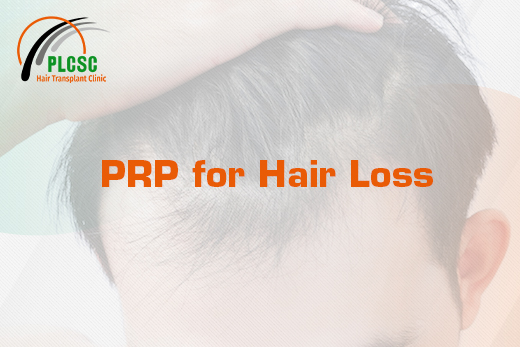Picture it: a revitalising elixir, drawn from your own blood, injected into your scalp to awaken dormant follicles and ignite a cascade of hair growth.
Now now, hold on. Let us explain! We are talking about the allure of Platelet-Rich Plasma (PRP) therapy. Curious? Read along to know all about its facts and fiction!
1. What is PRP?
Platelet-rich plasma (PRP) therapy harnesses the power of blood’s key components: plasma and platelets. While platelets are primarily recognised for clotting, they also contain growth factors crucial for cell reproduction and tissue regeneration. PRP is essentially blood with a higher concentration of platelets than usual.
2. What is PRP Therapy?
In the PRP procedure, a small blood sample is drawn from the patient, then GFC (Growth factor concentrate) is added to it before spinning it in centrifuge machine to separate platelets from other blood components, concentrating them in plasma. This platelet-rich plasma is then injected into the targeted area.
Now routinely used in post operative period after hair transplant, the aim is to boost the concentration of growth factors in the specific region to accelerate healing.
Is it a new ‘Amrit’ for your hair? How does it work? Let us figure it out!
3. Why is it relevant in hair restoration?
Studies suggest that the heightened levels of growth factors in PRP may expedite the healing process, reducing recovery time for injuries, alleviating pain, and even promoting hair growth.
Termed as “Vampire” treatments, PRP is gaining popularity for its results in improving skin texture and hair growth. But as with any popular remedy, separating fact from fiction becomes crucial.
4. Evaluating the Evidence
In the context of hair loss, PRP is believed to promote hair growth by enhancing the health of hair follicles and stimulating dormant follicles to enter the active growth phase.
“ Most research on PRP for hair loss has focused on its use to treat androgenic alopecia (AGA).
The evidence suggests that PRP may work best when it is combined with other treatments for AGA, such as topical minoxidil (Rogaine) or oral finasteride (Propecia), which is an anti-androgenic drug.”- Published by Harvard Medical School.
5. Debunking Myths
Despite its growing popularity, PRP therapy for hair loss is not without misconceptions. Let’s debunk some common myths:
● PRPisaMiracle Cure: While PRP can yield noticeable improvements in hair growth, it may not be a one-size-fits-all solution. Results vary depending on factors such as the severity of hair loss, underlying causes, and individual response to treatment.
● PRPWorksInstantly: Hair growth typically occurs gradually over several months, with optimal results evident after multiple treatment sessions.
● PRPisapermanent one-time solution: After the results become apparent, touch-ups are required whenever necessary or at least once annually to maintain the new growth.
6. Potential risks and side effects
While PRP is a low-risk procedure, PRP used for hair loss may present the following side effects
● Headache
● Swelling
● Itching
● Mild pain during the procedure
● Temporary discoloration
● Bleeding
● Infection
● Formation of scar tissues
Now hold on! Just because a risk exists does not mean it will happen. Choose your clinic wisely and check their credentials to ensure you are in good hands.
Takeaways
Platelet-rich plasma (PRP) therapy holds promise as a safe and effective treatment for hair loss, backed by scientific evidence and clinical studies. By separating fact from fiction and debunking common myths, individuals can make informed decisions about incorporating PRP into their hair restoration journey.
Remember, while PRP may not be a miracle cure, it offers a valuable option for those seeking to combat hair loss and regain confidence in their appearance.


Leave a Reply